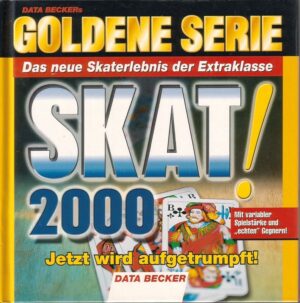Retro Replay Review
Gameplay
Circus Atari delivers an immediately accessible gameplay loop that captures the excitement of a classic carnival attraction. You control a teeter-totter at the bottom of the screen, moving it left and right to catch bouncing clowns. Successfully landing a clown on one end of the seesaw launches the other clown skyward, sending him careening into a vibrant wall of balloons overhead. Each popped balloon chips away at the formation and rewards you with points, making every successful bounce feel meaningful.
(HEY YOU!! We hope you enjoy! We try not to run ads. So basically, this is a very expensive hobby running this site. Please consider joining us for updates, forums, and more. Network w/ us to make some cash or friends while retro gaming, and you can win some free retro games for posting. Okay, carry on 👍)
Precision and timing are key. If a clown misses the platform or lands directly where another clown is already seated, he crashes and disappears. Each player is allotted five clowns per round, creating a palpable tension as your life count ticks down. The mechanism is simple yet challenging: a single mistimed move can end your run prematurely, encouraging you to hone your reflexes and anticipate each bounce’s trajectory.
The controls are straightforward and responsive. Using the Atari joystick, you can shift the teeter-totter with just the right sensitivity to meet each incoming clown. The button press to release the next clown is satisfying, offering a small pause that lets you recalibrate before the next launch. This ebb and flow of action and anticipation keeps you engaged, round after round.
Replayability shines through as you chase higher scores and longer clown-staying streaks. With no branching paths or hidden levels, the game’s challenge lives in its increasing speed and the chaotic patterns of the balloon formations. For solo players and high-score chasers alike, Circus Atari offers an addictive loop that rewards patience and practice.
Graphics
Visually, Circus Atari embraces the minimalist charm of early 1980s home console titles. The screen is awash with bold reds, blues, and whites, ensuring balloon clusters stand out crisply against the black background. Each color group is easily distinguishable, allowing you to track progress at a glance as balloons vanish with each successful pop.
The sprite work is basic but effective. Clowns are rendered with simple outlines and a splash of primary color, yet their hopping animation conveys just enough personality to sell the circus theme. The teeter-totter tilts convincingly with each successful catch, giving a satisfying sense of weight and movement despite the hardware’s limitations.
Animation frames may be limited, but they’re timed well. The bounce arcs look smooth, and the collision of clowns into the balloon wall is punctuated by a quick flash and a popping sound effect. These small touches heighten the visual feedback loop and keep the screen feeling lively, even as clusters of balloons shrink in size.
Although modern players accustomed to high-definition graphics may find Circus Atari’s visuals rudimentary, there’s a nostalgic warmth to the blocky shapes and bright palette. In today’s retro-enthusiast landscape, the game stands as a charming example of how color contrast and clever design evoke excitement without overwhelming detail.
Story
Circus Atari offers no sprawling narrative or character arcs—its tale is told entirely through action. Your role is that of a carnival performer, expertly balancing clowns on a teeter-totter to pop balloons high above. This minimal premise places the focus squarely on gameplay mechanics rather than plot exposition.
Despite the absence of a traditional story, the game evokes the whimsical atmosphere of a traveling circus. The bright balloon colors, cheerful clown sprites, and dynamic bouncing action all contribute to a sense of lighthearted fun. You’re not rescuing princesses or defeating monsters; you’re at a ringmaster’s whim, delivering one spectacular show after another.
The lack of narrative depth can be viewed as both strength and weakness. On one hand, you’re free to dive in and play without needing to follow a storyline. On the other, there’s little motivation beyond high-score chasing. For players who crave rich lore or character-driven experiences, Circus Atari may feel too skeletal in its presentation.
Still, if you appreciate games that tell a story through gameplay alone—where every bounce and balloon pop feels like a small episode in a bigger circus performance—then the title’s simplicity becomes part of its charm. It crafts a cohesive theme without words, demonstrating that even the most basic mechanics can evoke an engaging setting.
Overall Experience
Circus Atari is a delightful throwback to the golden age of home console gaming. Its elegance lies in the purity of its mechanics: move, catch, bounce, and pop. The intuitive controls and escalating difficulty curve make it approachable for beginners while offering depth for seasoned arcade veterans aiming to break their personal bests.
Graphically and thematically, the game captures the essence of a bustling circus act. While there’s no deep narrative to unravel, the vibrant color palette and well-timed animations keep the experience fun and visually engaging. The lack of extraneous menus or cutscenes means you’re always one joystick flick away from the next adrenaline-pumping round.
Ultimately, Circus Atari shines as a budget-friendly pick-up-and-play title. It’s perfect for short bursts of entertainment and nostalgia-fueled marathon sessions alike. If you enjoy arcade-style reflex challenges and don’t mind the absence of modern bells and whistles, this game delivers pure, unadulterated fun.
Whether you’re a retro collector seeking another piece of Atari history or a casual player in search of a charmingly simple pastime, Circus Atari offers a straightforward yet addictive experience. Prepare to hone your timing, chase balloon-popping thrills, and achieve new high-score milestones in this endearing circus spectacle.
 Retro Replay Retro Replay gaming reviews, news, emulation, geek stuff and more!
Retro Replay Retro Replay gaming reviews, news, emulation, geek stuff and more!








Reviews
There are no reviews yet.